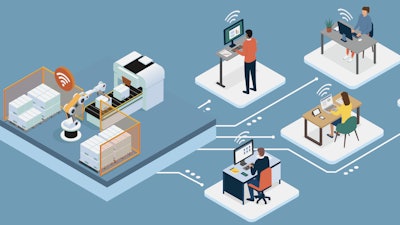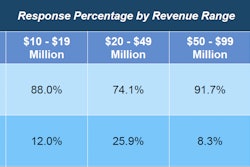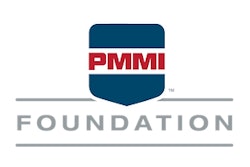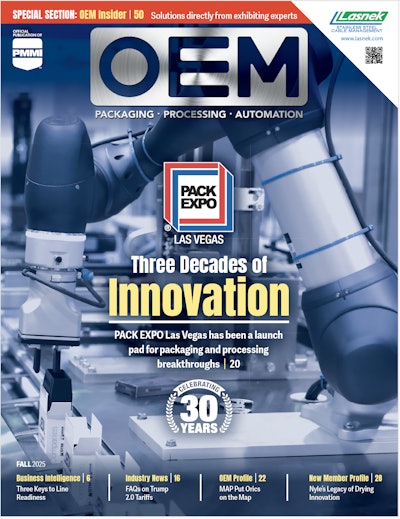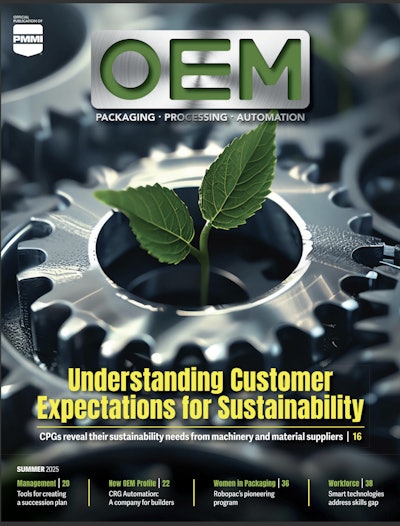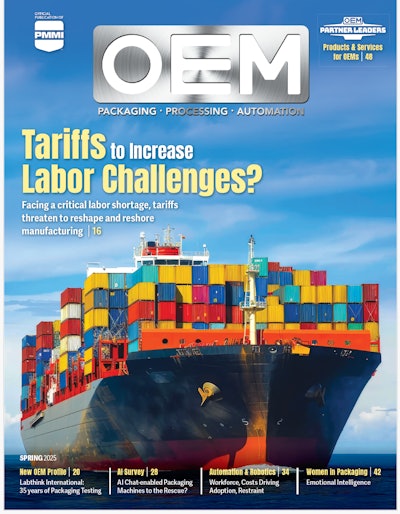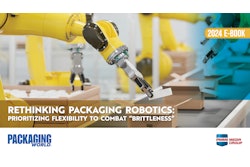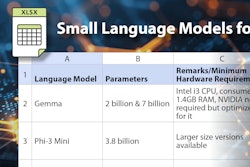As companies embrace a connected manufacturing environment, enterprise resource planning (ERP) systems have become the backbone of operations for OEMs. But according to PMMI’s ERP Usage Quickie Survey, the road to seamless ERP integration is anything but straightforward. Study respondents revealed a landscape marked by fragmentation, heavy customization, and shifting priorities around cloud adoption and system integration. The findings reveal not just where ERP stands today—but where it needs to go.
Diverse legacy systems
Unlike other industries where a few ERP giants dominate, the packaging and processing space remains highly fragmented. While systems like Epicor/Kinetic, SAP, Global Shop, and Oracle NetSuite are commonly used, over 40% of respondents reported using “Other” ERP platforms—highlighting a diverse market with no clear leader.
Most systems in use have been active for over a decade (55%), but that hasn’t stopped companies from investing in updates. Thirty-eight percent reported ERP updates within the past year, signaling a steady commitment to system upkeep.
On-premises deployment still dominates, especially among mid-sized firms. However, cloud-based and hybrid ERP models are gaining traction—particularly with larger manufacturers looking to future-proof their operations and reduce IT overhead.
Customization comes at a Cost
One constant across respondents? Customization.
Most companies reported moderate to high levels of customization, especially those using niche or lesser-known ERP systems. While customization helps tailor systems to unique business needs, it can also lead to upgrade difficulties, higher maintenance costs, and integration headaches.
Satisfaction with ERP providers was generally solid across key areas like functionality, service support, and user-friendliness. Yet, mixed reviews for systems like SAP and Epicor suggest that even top players aren’t immune to challenges in service delivery and system complexity.
Integration: The missing link
A clear theme emerged around integration: it’s a common struggle.
While ERP systems are widely used for finance, inventory, operations, and procurement, many OEMs still rely on external systems for critical functions like Customer Relationship management (CRM), engineering, and payroll.
In fact, 76% of companies use key software platforms outside their ERP—frequently opting for solutions like Salesforce, HubSpot, Solidworks, and ADP. Integration between these platforms and core ERP systems is often patchy, with many firms resorting to custom-built integrations rather than leveraging native APIs.
What’s next?
Looking ahead, many OEMs plan to:
- Upgrade existing systems or migrate to cloud-based platforms
- Enhance integration with CRM and planning tools
- Implement or expand CPQ (Configure-Price-Quote) systems
- Explore new ERP platforms better aligned with evolving business needs
With these trends in mind, PMMI’s survey highlighted eight key recommendations for OEMs navigating the ERP landscape:
- Prioritize integration with critical third-party systems.
- Evaluate cloud transition opportunities.
- Reassess high customization strategies that may hinder agility.
- Plan proactive system updates and upgrades.
- Expand ERP usage beyond traditional core functions.
- Involve cross-functional teams in ERP decision-making.
- Factor vendor support and training into selection criteria.
- Benchmark ERP performance using industry data.
ERP as a strategic tool
As OEMs grapple with supply chain volatility, rising customer expectations, and global competition, ERP systems must be more than just a back-office tool—they need to enable real-time data insights, seamless cross-platform integration, and scalable growth. The challenge isn’t just selecting the right ERP—it’s ensuring their ERP strategy aligns with the company’s broader business goals. And as the PMMI data shows, that means rethinking customization, doubling down on integration, and embracing the future of cloud-enabled enterprise solutions.
